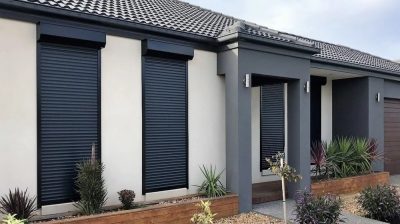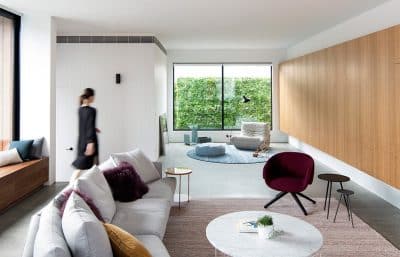
Feng shui is an old art from China and it is known to build and signify a relationship that grows between a person and their surroundings. It simply is about the harmony and revolves around the positive circulation of energy in the house. Today, people are trying to take great strides to reach the tranquility and establish a good balance in the rush of the urban culture. So, the Feng Shui principles have become the key element in interior design. It is not just about the beauty but it is more like a combination of purposefulness, mindfulness, and the use of natural elements in harmony. Thus, through understanding and applying the concepts of interior design, you can convert your home into a sanctuary of serenity and calmness. This article sheds light on the fundamentals of Feng Shui by giving you valuable tips on how to achieve interior harmony and calm in your home.
The Five Elements of Feng Shui
In accordance with feng shui, there are five primary elements. Each of them will contribute to the live of space a certain spirit and color. Wood means expansion and vitality. You can use plants or green color for this. The fire is the very essence of dynamism and energy, which is demonstrated by the intense colors. Earth symbolizes the image of constancy and provision in the form of soothing shades of the earth and the ceramic. The metal element is presented in white and gray colors. Symbolism of water, which is akin to both tranquility and knowledge, is revealed through the representation of flowing shapes or blue color.
Let’s delve into the fascinating world of Feng Shui and explore the Five Elements (also known as “Wu Xing”). These elements play a crucial role in creating balance, harmony, and positive energy in our environment. Here’s a simple guide to help you understand them:
Earth (土 Tǔ):
- Associated with stability, grounding, and nourishment.
- Shapes: Square or rectangular.
- Colors: Earthy tones like beige, brown, and yellow.
- Used in both Form School (based on visible objects) and Compass School (based on compass directions and Qi energy) Feng Shui
Water (水 Shuǐ):
- Symbolizes flow, adaptability, and intuition.
- Shapes: Curved or wavy.
- Colors: Blue and black.
- Represents wealth and career opportunities.
- In Compass School, it corresponds to the north direction
Fire (火 Huǒ):
-
- Represents passion, transformation, and energy.
- Shapes: Triangular or pointed.
- Colors: Red, orange, and purple.
- Enhances fame, recognition, and social connections.
- In Compass School, it aligns with the south direction
Metal (金 Jīn):
- Signifies strength, clarity, and precision.
- Shapes: Circular or spherical.
- Colors: White, silver, and metallic tones.
- Associated with wealth, organization, and mental focus.
- In Compass School, it corresponds to the west and northwest directions
Wood (木 Mù):
- Represents growth, flexibility, and vitality.
- Shapes: Rectangular or columnar.
- Colors: Green and brown.
- Enhances health, family, and personal development.
- In Compass School, it aligns with the east and southeast directions
Where Did the Five Elements Come From?
The Five Elements theory matured during the Han dynasty (second or first century BCE) and was applied in various fields such as Feng Shui, astrology, Chinese medicine, music, military strategy, and martial arts. It reveals how ancient Chinese perceived the relationships between natural objects and how to strengthen or weaken them. For instance, in Chinese medicine, a weak liver (associated with Wood) can be balanced by nourishing the kidneys (associated with Water)
How Five Elements Theory Is Used in Feng Shui
- Form School: Focuses on visible elements like color, shape, and material. For example, using earthy tones (Earth element) in home decor.
- Compass School: Relies on compass directions and unseen Qi energy. Each cardinal direction corresponds to one of the Five Elements. The Luo Pan compass is used for this approach.
How Elements Influences the Energy in a Room
The atmosphere in a place has a lot to do with balance and coherence of all the elements integrated into the space. Wood has the power to add to a room with the vitality and the grace of life; the fire can breathe action and energy into the space. Earth element invokes a calm without noise, as if it is what the nature itself does. The metallic nature of an item is a symbol of awareness and concentration, while the water is a symbol of depth and tranquility. Is it the synergy of all these elements that gives off a certain kind of mood.
Tips for Incorporating these Elements into Home Decor
It is not only the collection of all these components in home decor but also achieving the right harmony and balance that fits you the most is what that matters. The use of wood and metal in a balance can give water and earth elements a chance to be incorporated in the design, thus creating a softer ambience. But there is also the possibility that a room, which is characterized by water element, may need earth elements to have stability. It is essential for every element to interconnect with the other elements and harmonize with them, so the place feels alive, serene, and in balance.
The Importance of Color in Feng Shui
In the ancient Chinese art of Feng Shui, the color is treated with a great emphasis as it is believed to be a very powerful instrument that controls the chi or energy of the space. All these colors have a variety of energies and so different to somebody’s mood and mental health. For instance, red is a vibrant color that adds enthusiasm and passion to a space, but too much of it can evoke instability and anxiety. Moreover, blue is a color identifiable with quietness and tranquility that is suitable to be used as bedroom or bathroom paint colors. Green, the color of recovery and newness, is perfect for the living room or study. It is an important tool in mental health care as it helps to recover balance and inner peace.
Recommendations for Color Schemes in Different Rooms
The design of the color schemes for different rooms is a careful consideration as it depends on the functional nature of the room and the type of ambience that is to be created. In the bedrooms, the calming colors of pale blues, greens, and lavenders play a role in relaxing the body with the objective of helping it get into the sleep. For living spaces, you can make use of earth tones like beige, yellow, and orange to create a comforting mood and make people feel at home. Workplaces offering green or light blue shades will contribute to workers’ concentration and creativity.
How Colors can affect Mood and Energy
The use of colors in Feng Shui is not only a matter of beauty; it is what energy is symbolized. For example, white stands for purity and transparency, and can be utilized to achieve a feeling of spaciousness and calmness. Knowing the influence of these colors helps in the production of spaces that not only look beautiful but also reflect the desirable emotional and energetic qualities. By wisely selecting colors for each room, you will be able to let the positive energy flow, thereby contributing to the overall feeling of well-being and harmony in your home.
Furniture Placement and Room Layout
One of the major components of Feng Shui is the placement of furniture in order to achieve a balanced energy pattern. This principle revolves around the command position where the furniture, especially beds and desks, are placed in a spot facing the door but not to be directly aligned with it. This position provides an individual with a sense of control and security in their territory. Moreover, furniture should be organized in a way to facilitate a continuity of energy by removing blockages, and avoiding sharp angles directed towards sitting or sleeping areas. Use of open spaces and avoiding clutter in general are equally important as they help energy flow freely which in turn reduces stress. The right choice and distribution of the furniture as well as keeping the environment uncluttered and open create a well balanced and serene atmosphere which is suitable for relaxation and wellbeing.
Common Feng Shui Myths and Misconceptions
Feng Shui is not just a myth but a result of many years of practice, which leads to many people misinterpreting the meaning of Feng Shui. What many do not know is that Feng Shui is more than a random mix of superstitions and decorative items, such as wind chimes or frogs. In fact, Feng Shui is a highly sophisticated art that works with space arrangements and energy flow, not just the objects. The other misconception is that Feng Shui is inflexible and thus does not have the capacity to accommodate the changing lifestyles. In reality, the core principles of Feng Shui are very flexible and can be modified to align with modern living spaces. Understanding these distinctions not only helps to clarify but also to create a feng shui concept that can be brought closer to the modern interiors.
Conclusion
Feng Shui, also known as the Art of Feng Shui, is not merely about decorating a house; it is a profound philosophy that aims to bring harmony and balance to living spaces. By delving into the Five Elements, understanding the significance of colors, arranging furniture thoughtfully, and strategically planning the use of space, one can create an ambiance that is not only visually appealing but also imbued with positive energy and good vibes.
Dispelling myths surrounding Feng Shui and appreciating both classical and modern interpretations of this ancient practice provide a deeper insight. Essentially, Feng Shui involves geo-mapping your house according to your own sensibilities, guided by the principle of calming your spirit and enhancing overall well-being and spiritual balance within your home.
Remember, the Art of Feng Shui goes beyond aesthetics—it’s about cultivating harmony and positive energy!








